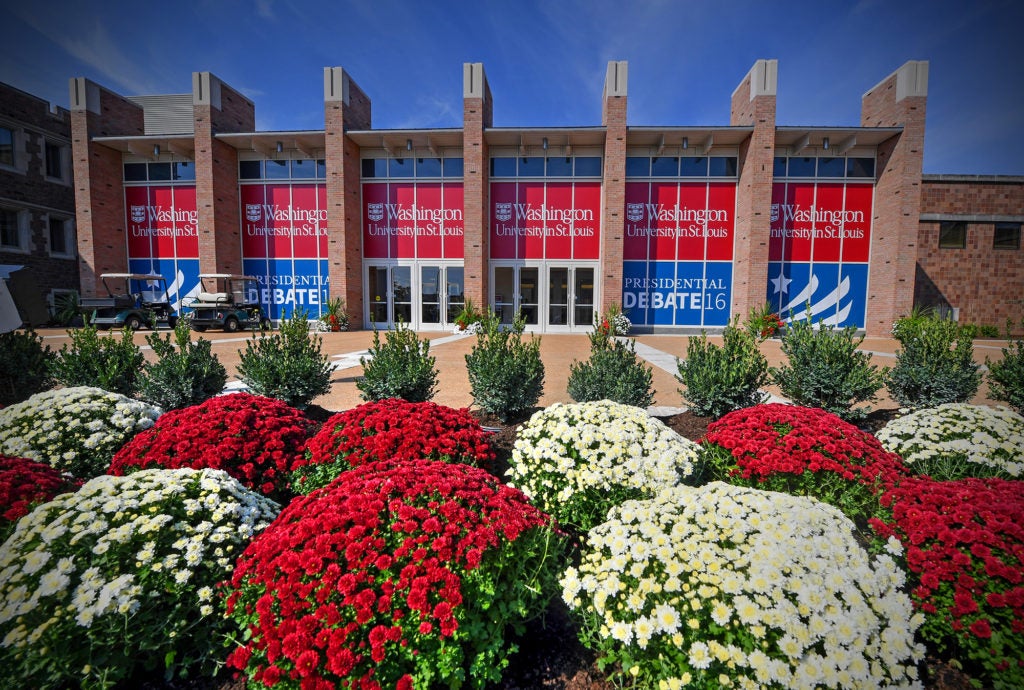
The Athletic Complex, with its spangled banners and blooming flowers, has never looked better. (Photo: James Byard/Washington University)
This Sunday, Oct. 9, Washington University in St. Louis will host the second presidential debate. Democratic nominee Hillary Clinton and Republican nominee Donald Trump are the stars of the show, but a supporting cast of more than 4,500 journalists, student volunteers, local police officers, vendors, student audience members, campaign staff, surrogates and university employees also play important roles in this historic event.
“We’re ready,” Chancellor Mark S. Wrighton said. “You can feel the buzz on campus. The students are excited; we’re excited. We’ve been here before, but the thrill never goes away.”
When an expected 80 million viewers — maybe more — tune in to the debate, they will see spangled banners, blooming flowers and Brookings Hall bathed in red, white and blue lights.
But what they won’t see is Craig Hager help a road-wary debate official log onto the Wi-Fi. Or Andrew Koch transform a yoga space in the Sumers Recreation Center into a campaign office. Or Alan Kuebler, associate vice chancellor for resource management, secure sandbags for Facebook.
“When I got the call, I thought, ‘What in the world is flooding?’” Kuebler said. “Well, Facebook needed weights to stabilize their lighting equipment. So they got their sandbags. It doesn’t matter how big, small or strange the request is — you get it done.”
That can-do attitude is why Washington University has hosted more debates than any other university in the nation. It all started in 1992, when the university had one week to stage the presidential debate with Bill Clinton, George H.W. Bush and Ross Perot. The Commission on Presidential Debates (CPD) tapped Washington University again in 2000 and in 2004 as a presidential debate site, and in 2008 for the vice presidential debate.
“One of the reasons we are back for the fifth time is that the response is always the same, which is, ‘We’ll take care of it,’” said Peter Eyre of the CPD. “The school has done a great job getting ready for what will be a very, very significant event. The media interest is off the charts, and so there is a lot pressure on everyone. And the school is doing its usual A+ work.”
Read the complete story about the tremendous effort put forth by the university community in The Source.